Supervisor: Dr Mark Edmonds
Probing the electronic bandstructure of Kagome metals and superconductors
The Kagome lattice TmXn (T: Fe, Mn, Co and X: Sn, Ge) is a two-dimensional (2D) network of corner-sharing triangles.The unique combination of lattice symmetry, spin–orbit coupling, and unusual magnetism in this system holds great promise for future electronics and spintronics applications. When considered as an isolated layer, the Kagome lattice hosts a flat band and a pair of gapless Dirac bands (similar to graphene). However, when spin-orbit coupling is included, a bandgap is opened and within the bandgap 1D edge states exist, that have the potential to transport current without dissipation. Moreover, the Kagome lattice also hosts a flat band predicted to have exotic electronic phases such as charge density waves and superconductivity. These exciting properties if realised in the same system will have profound implications in fundamental science and future technologies, such as dissipationless electronics and topological quantum computing. The recent discovery in 2018 of ferromagnetic Kagome metals and in 2020 of antiferromagnetic Kagome metals in bulk crystals that host massive and massless Dirac fermions respectively, has motivated experimental efforts to grow thin films of these materials.
In this project you will join a group working at the cutting edge of the field that are experts in the growth of 2D systems.1-3 Your goal will be to grow ultra-thin Kagome materials TmXn (T: Fe, Mn, Co and X: Sn, Ge) via molecular beam epitaxy (MBE) to the single-layer limit. MBE is a technique that allows the precise growth and control of epitaxial large area films. After successfully growing these materials, you will employ angle-resolved photoelectron spectroscopy (ARPES) at the Australian Synchrotron and international synchrotrons such as Advanced Light Source, Berkeley in order to directly measure the electronic bandstructure, including the size of the bandgap and the nature of the flat band.
1 C. X. Trang,.., M. T. Edmonds, Crossover from 2D ferromagnetic insulator to wide bandgap quantum anomalous Hall insulator in ultra-thin MnBi2Te4, ACS Nano DOI: 10.1021/acsnano.1c03936
2 Q. Li,.., M. T. Edmonds, Large bandgap quantum anomalous Hall insulator in a designer ferromagnet-topological insulator-ferromagnet heterostructre, arXiv:2105.08298
3 J. Collins,.., M. T. Edmonds, Electric-field-tuned topological phase transition in ultra-thin Na3Bi, Nature DOI: 10.1038/s41586-018-0788-5
Funding Notes:
Applicants should hold a first class Honours or Masters degree (or equivalent) and should have a strong background in physics. In addition, the advertised position would suit applicants with experience in experimental physics, in particular surface science or condensed matter physics.
Important Dates and scholarship amount:
Four application rounds per year, with deadlines for International Students of 31st March and 31st August and Domestic Students on 31st May and 31st October. Students will receive a $29,500 per year scholarship, and top-ranked or exceptional candidates may also be eligible for top-up scholarships of up to $10,000 per year.
Contact Dr Mark Edmonds (Mark.Edmonds@monash.edu) for more information or submit an expression of interest at fleet.org.au/phd.

